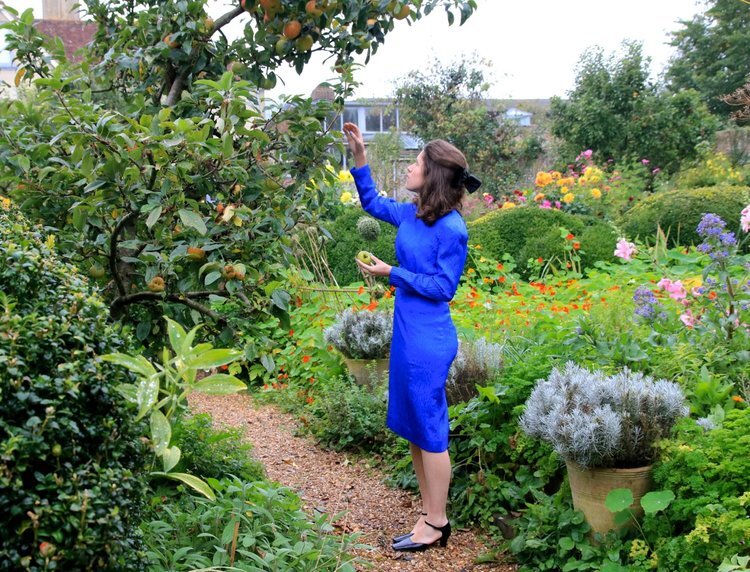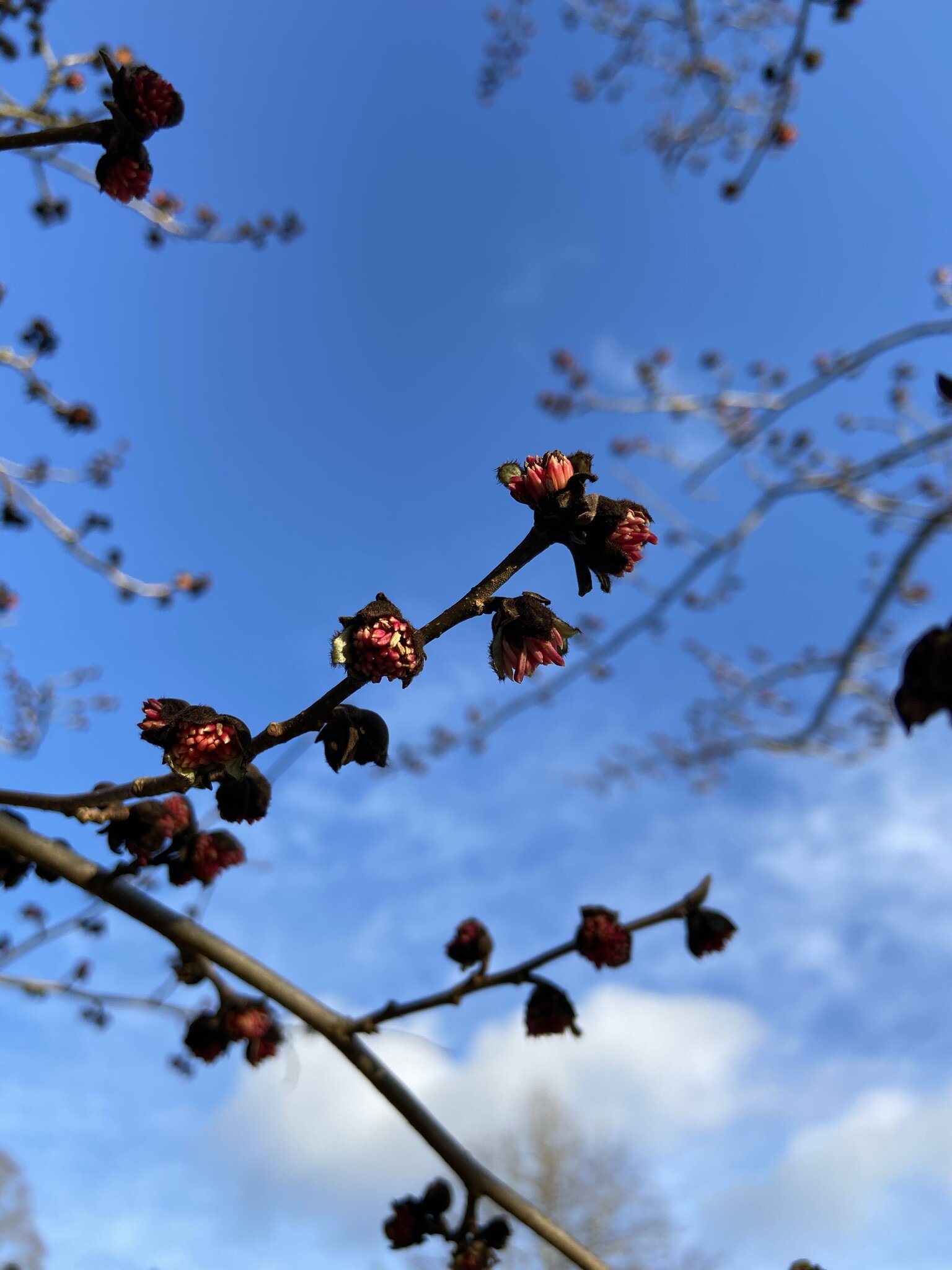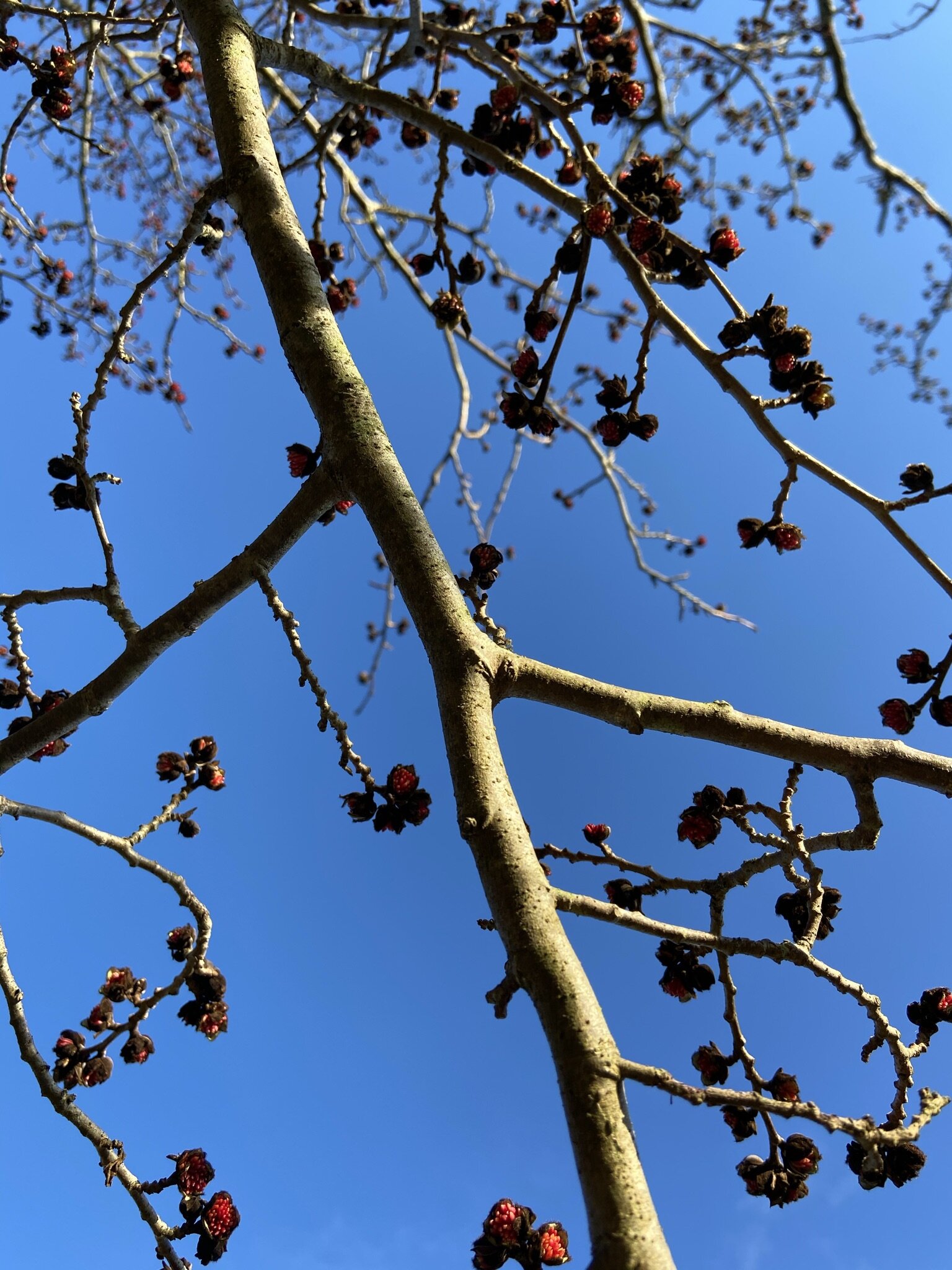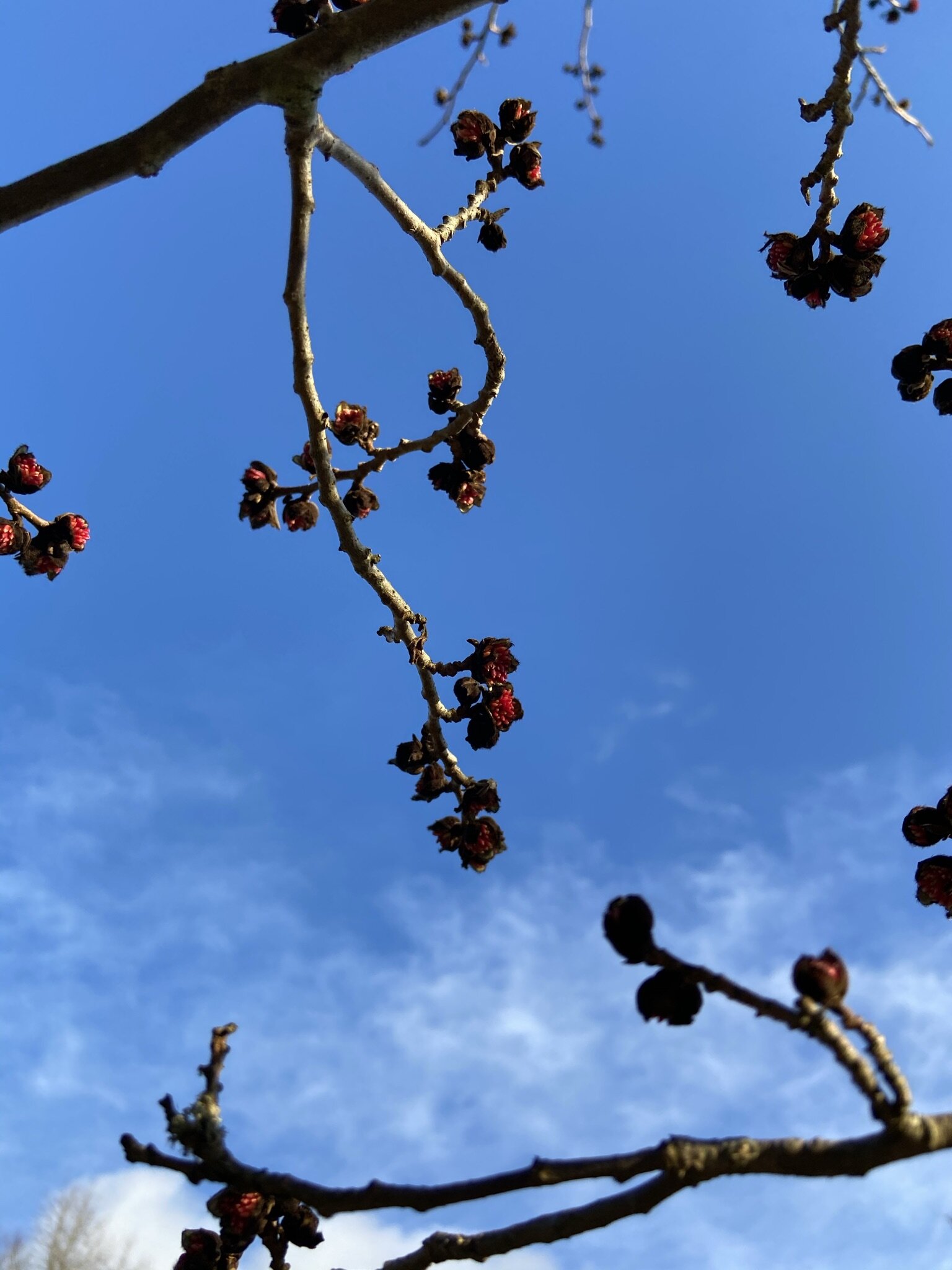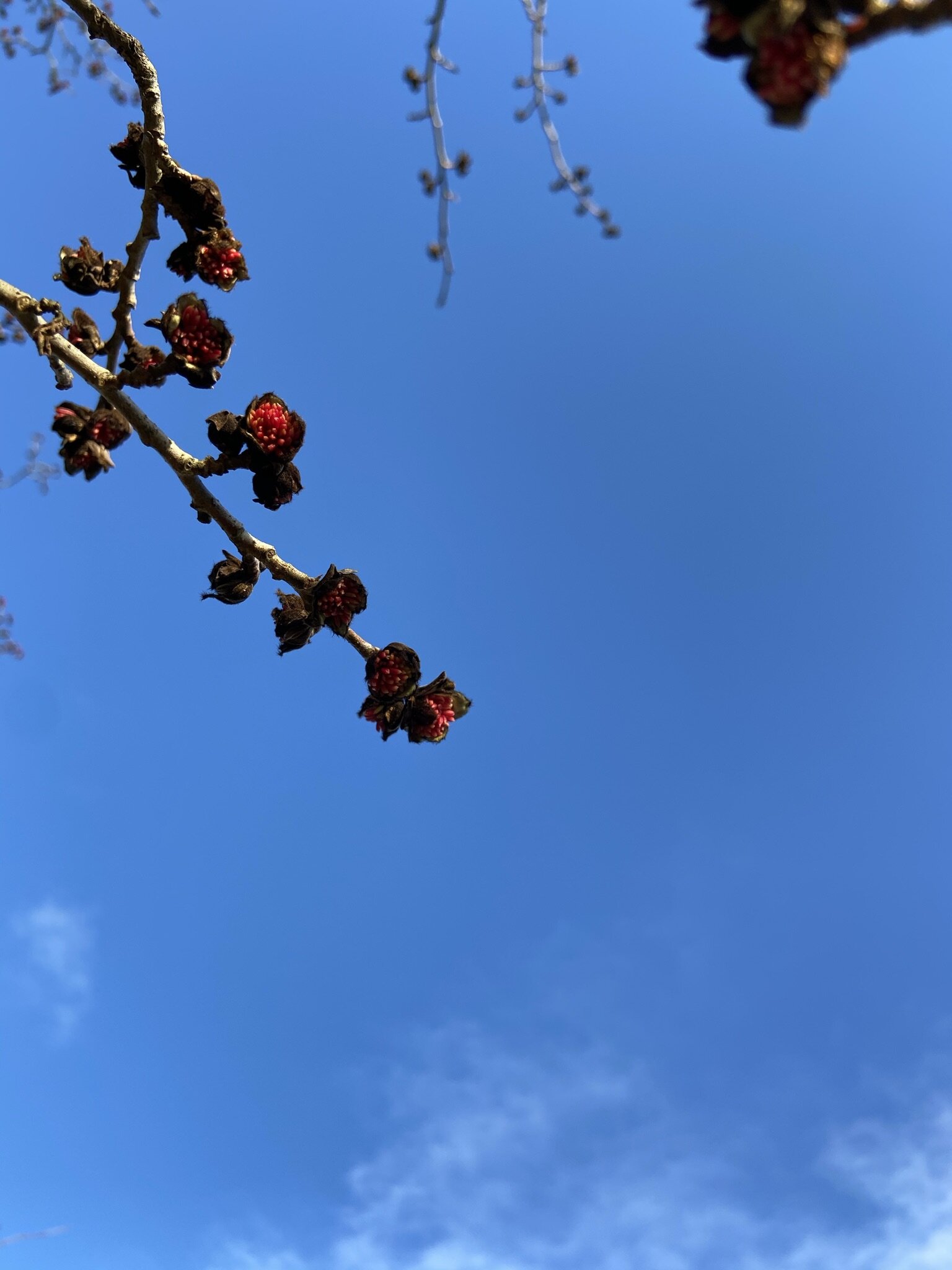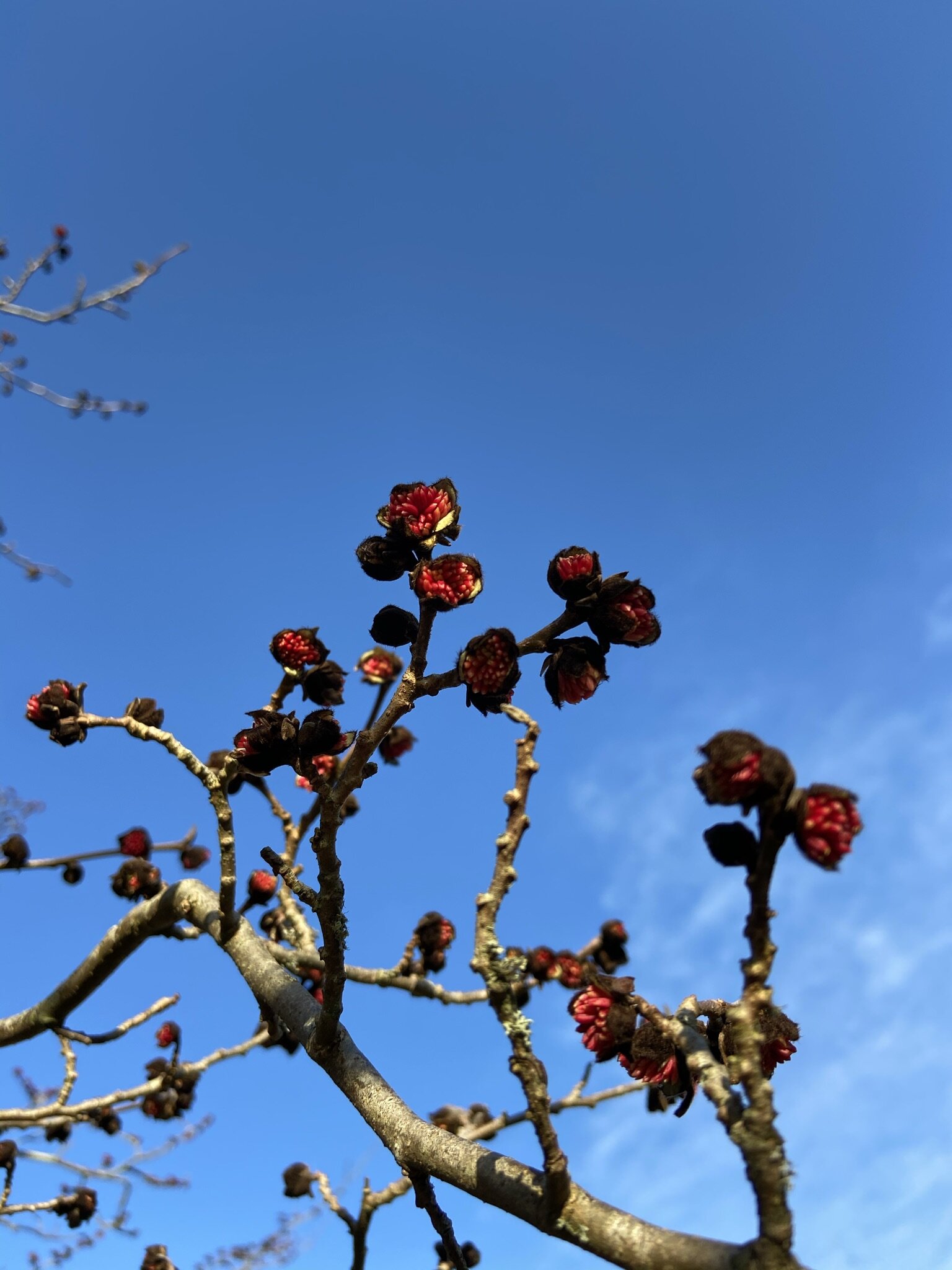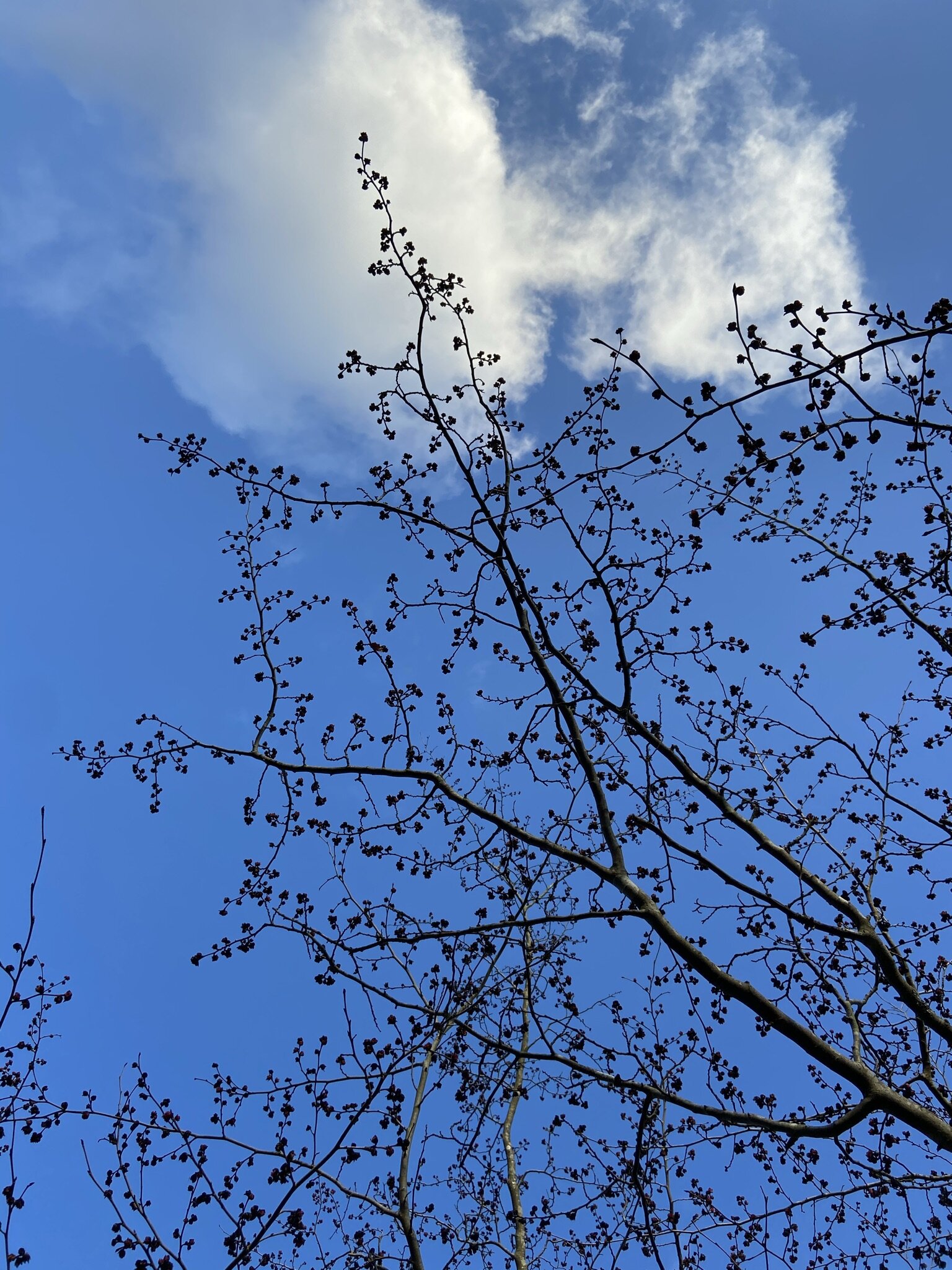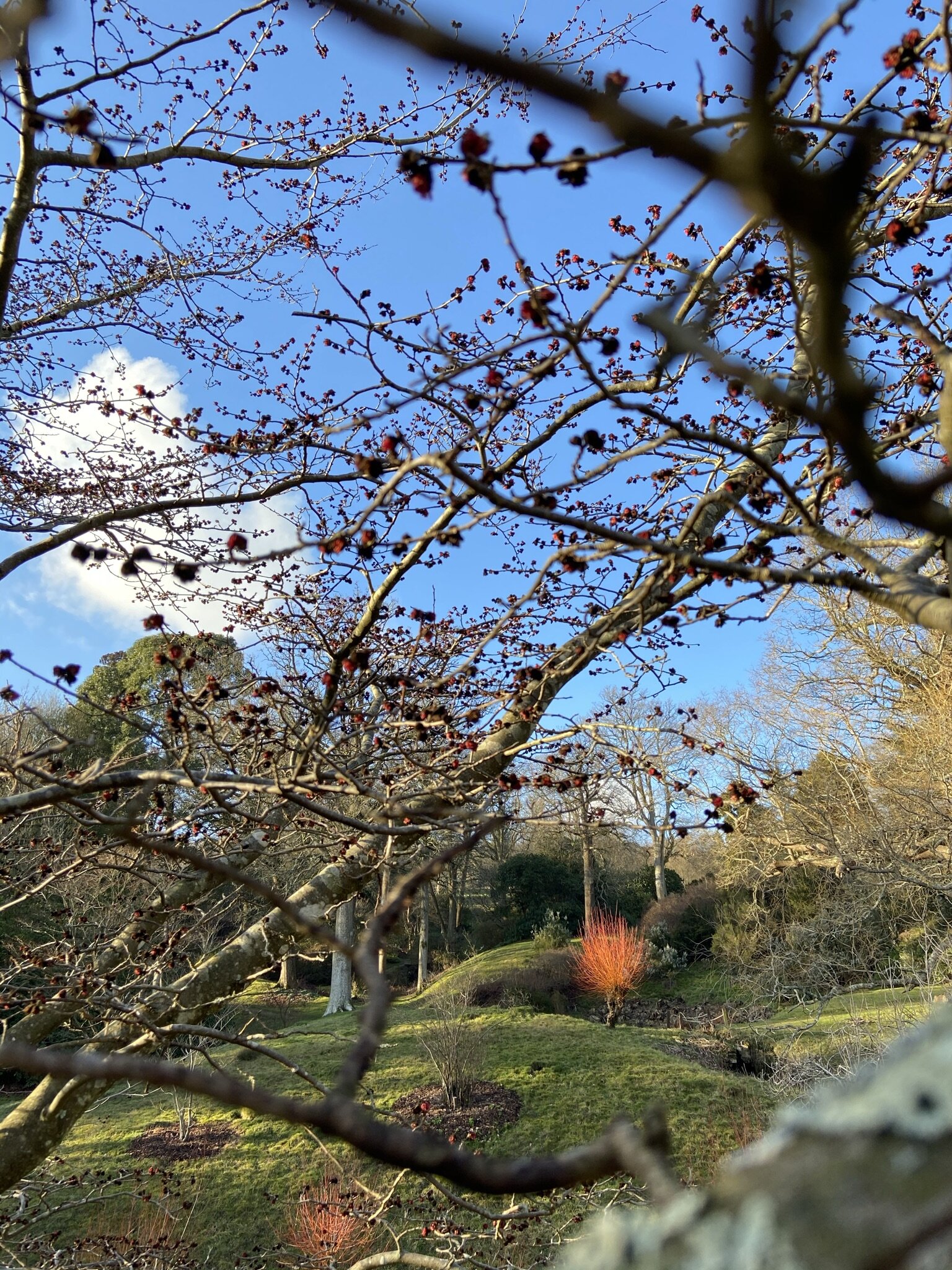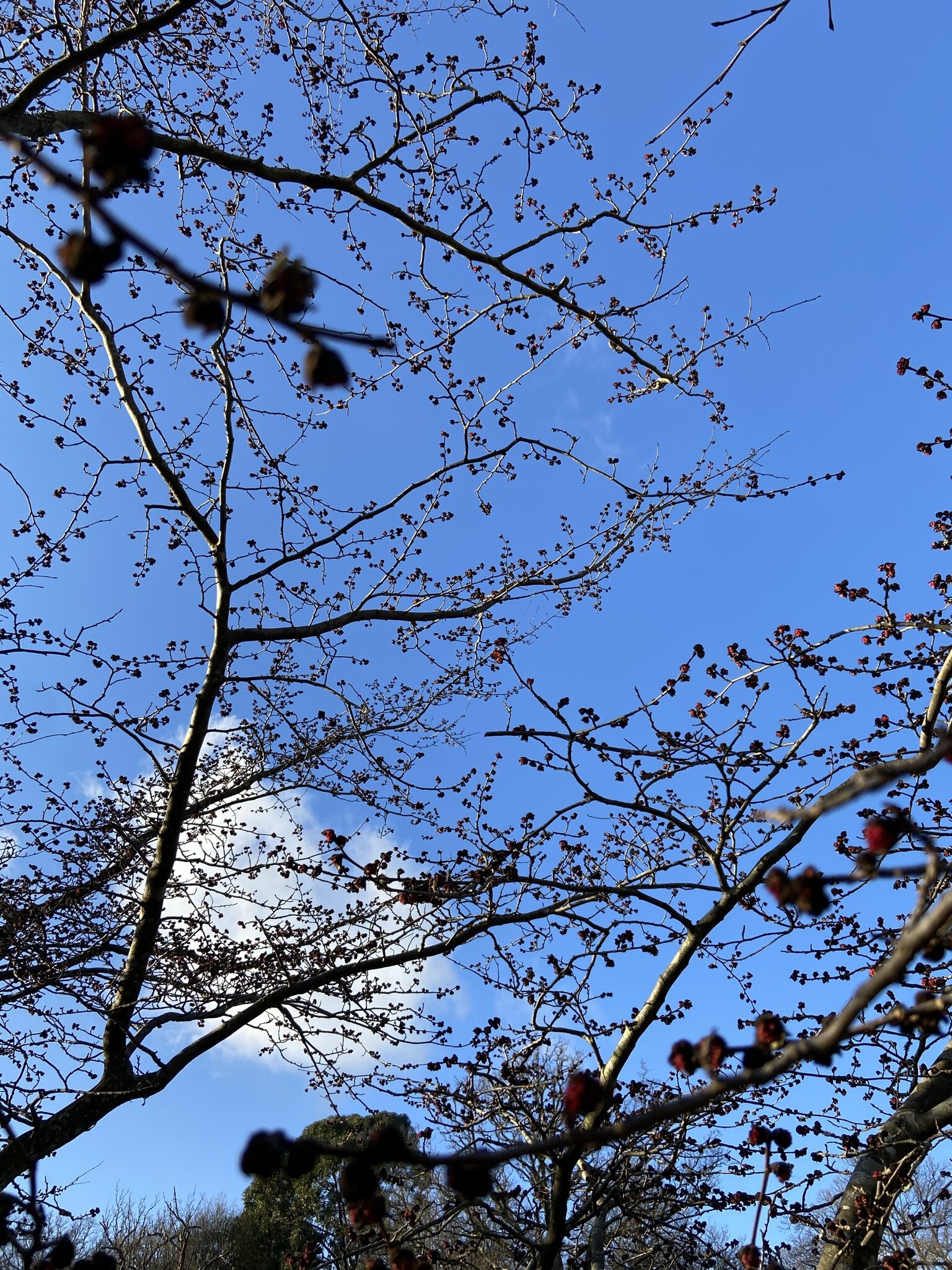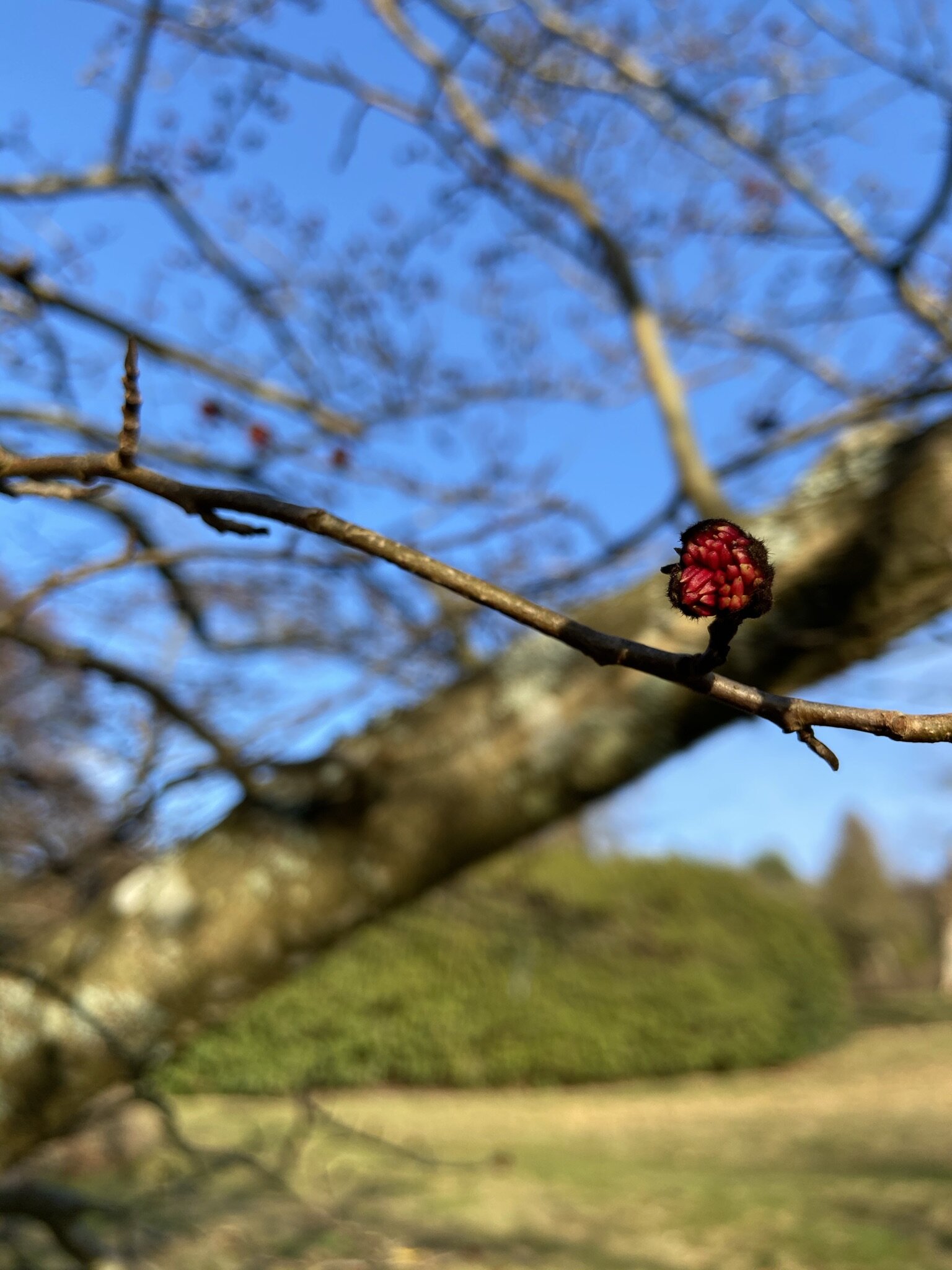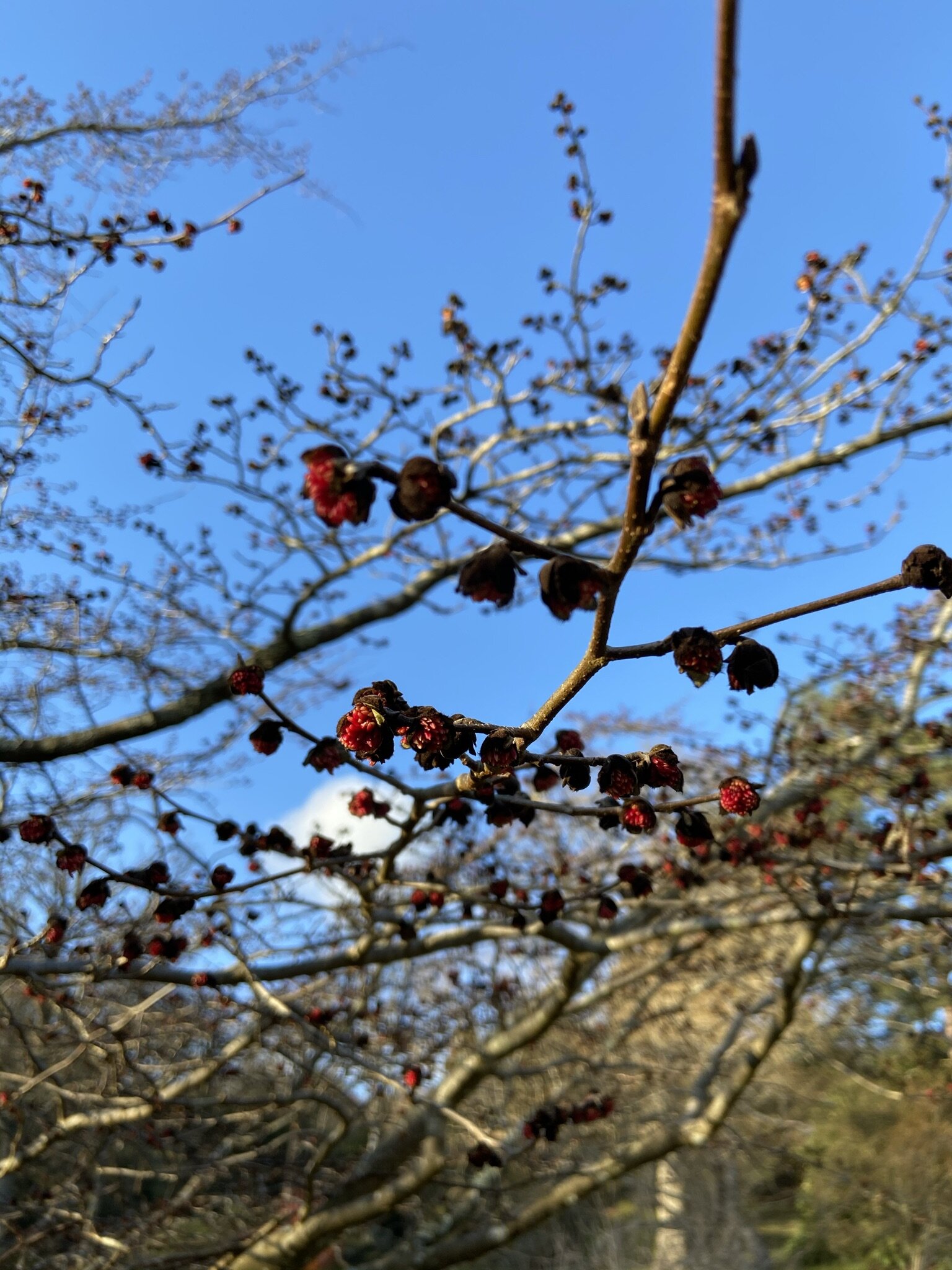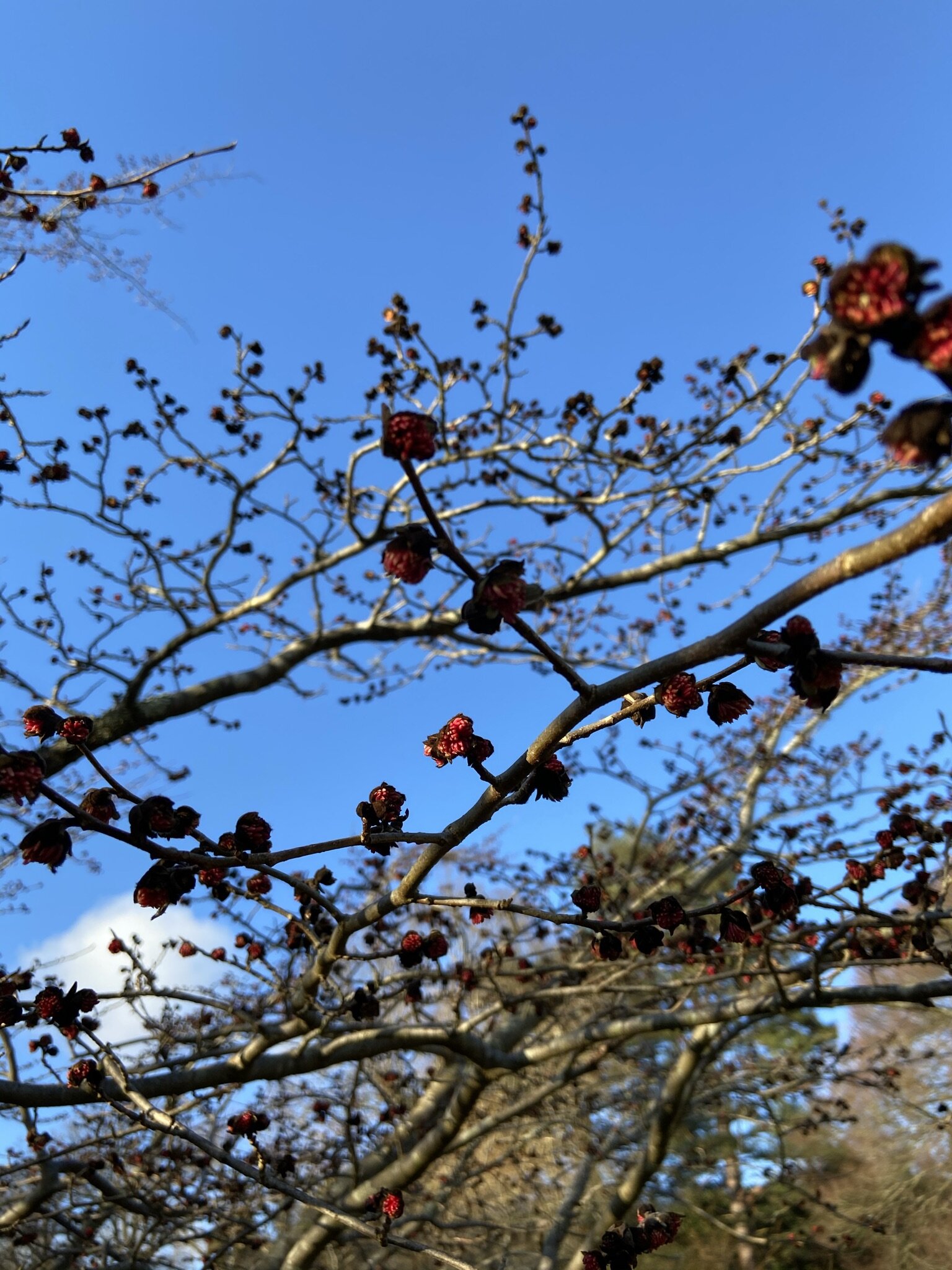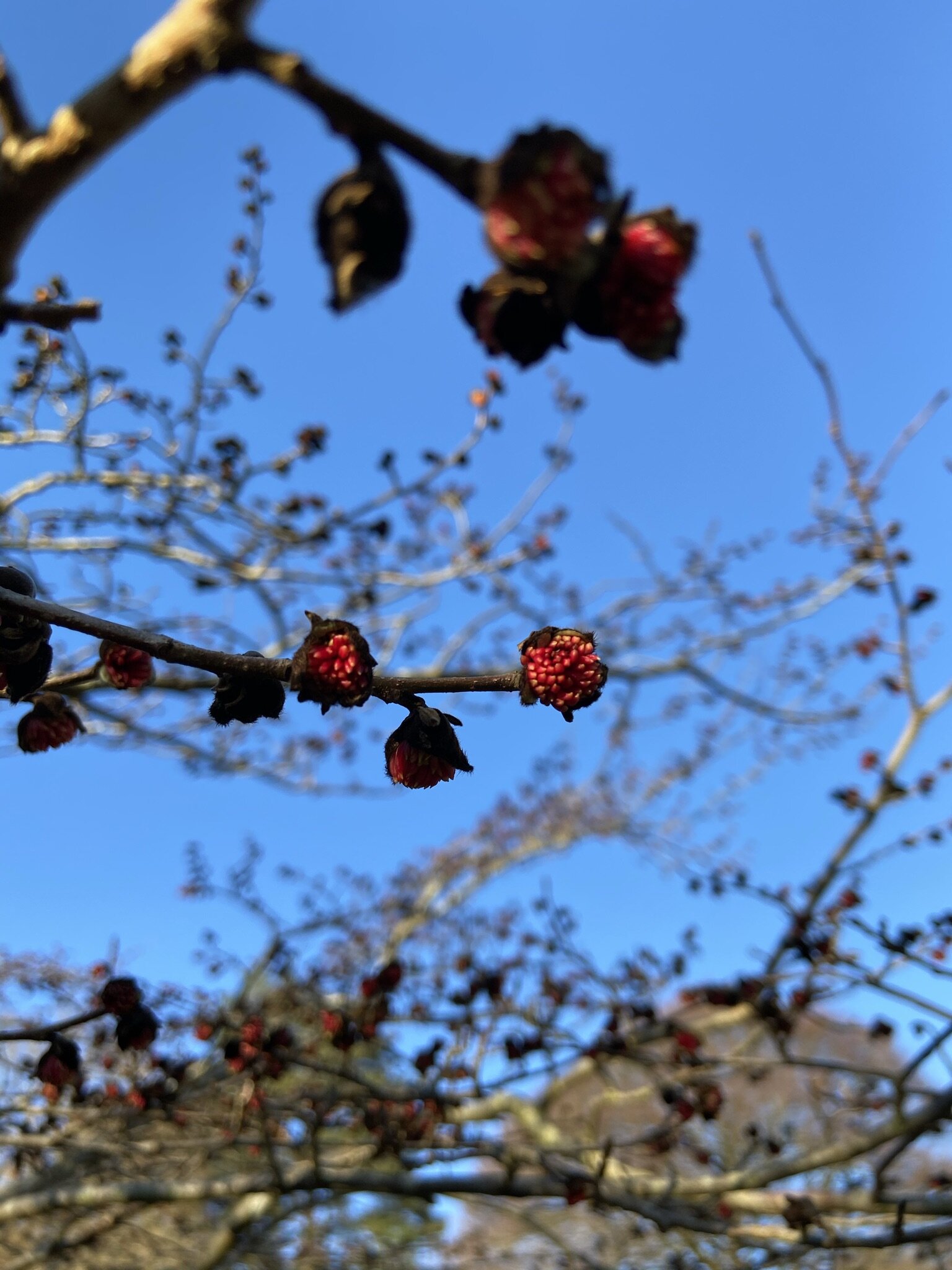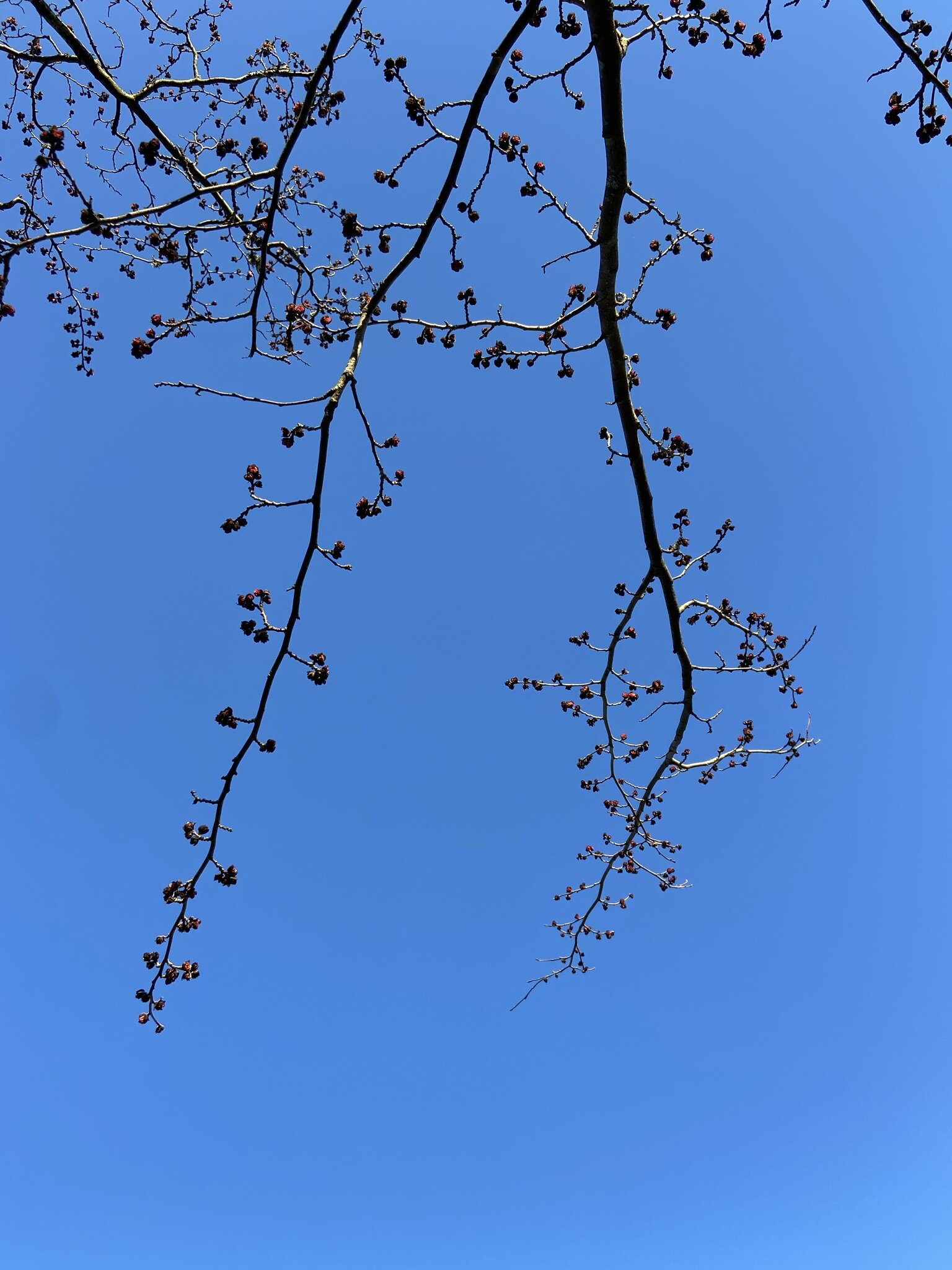Parrotia persica
On a winter wander through the garden this January, I spied a smattering of red on the Parrotia persica, and on further inspection discovered that the tree was enveloped in crimson buds.
After a consultation with my in-house plant expert (my mother) it turns out that these aren’t buds at all, they are actually flowers.
So Parotia persica flowers in winter, and this begins to make sense with the discovery that it is part of the Hamamelidaceae, which means it is related to the Witch-hazel, a tree that always looks incredibly dashing at this time of year.
I have been admiring Parrotia all year, I love the way it spreads it’s branches, the slightly unusual shape of it’s leaves, and it delighted during autumn by turning wonderful shades of yellow, orange and red. So I decided to delve further and this is what I found:
The plant Genus Parrotia, has only two species, persica and subaequalis.
It is named after F.W. Parrot (what a great name), a German naturalist and traveller. As with many plants, there are various other people associated with it, which I always find intriguing. It was given it’s name by Augustin Pyramus de Candolle, a Swiss Botanist, and you will find him referred to in plant books as ‘D.C’. It was recognised as a species by Carl Anton von Meyer, a German botanist, who is ‘C. A. Mey’. And there is a taller version of the tree, which was introduced into cultivation in 1977 by Fliegner and Simmons who discovered it in the Elburz Mountains of Northern Iran..
P. persica the tree I was admiring, is known as the Persian ironwood as it originates in Northern Iran and the Caucasus, the region between the Black Sea and the Caspian Sea. This species, the not so tall tree, turned up in European gardens in 1840, and in 1884 it was given a FCC (First Class Certificate!).
It reaches 12 metres tall in cultivation (but can reach 20 metres in the wild), has long spreading branches, atop a ‘muscularly, fluted’ trunk, and the smooth bark is made up of fine plates that flake.
The leaves are ‘alternate’ which means they don’t sit opposite each other on a branch, but one above the other. They are asymmetrical, ‘oblong’ to ‘ovate’ in shape, the edges are wavy or have ‘teeth’ and are glossy. In autumn they turn a beautiful deep red, orange and yellow.
It is deciduous, so it sheds it’s glorious leaves each autumn.
And the flowers I was admiring -
P. persica has dense clusters of small flowers. Purplish velvety buds, that bear 5-7 sepals, encase clusters of around 15 red stamens and 2 white style.
Stamens are the male reproductive part of a flower, made up of an anther, which produces the pollen, atop a filament which supports it. Style are the female part of the flower, and are the passage way for pollen. The flowers are pollinated by the wind, and the flowers bloom in the UK in winter, before the leaves appear in spring.
It’s a really wonderful tree, I’m very pleased I’ve got to know it better!
Alice xx
